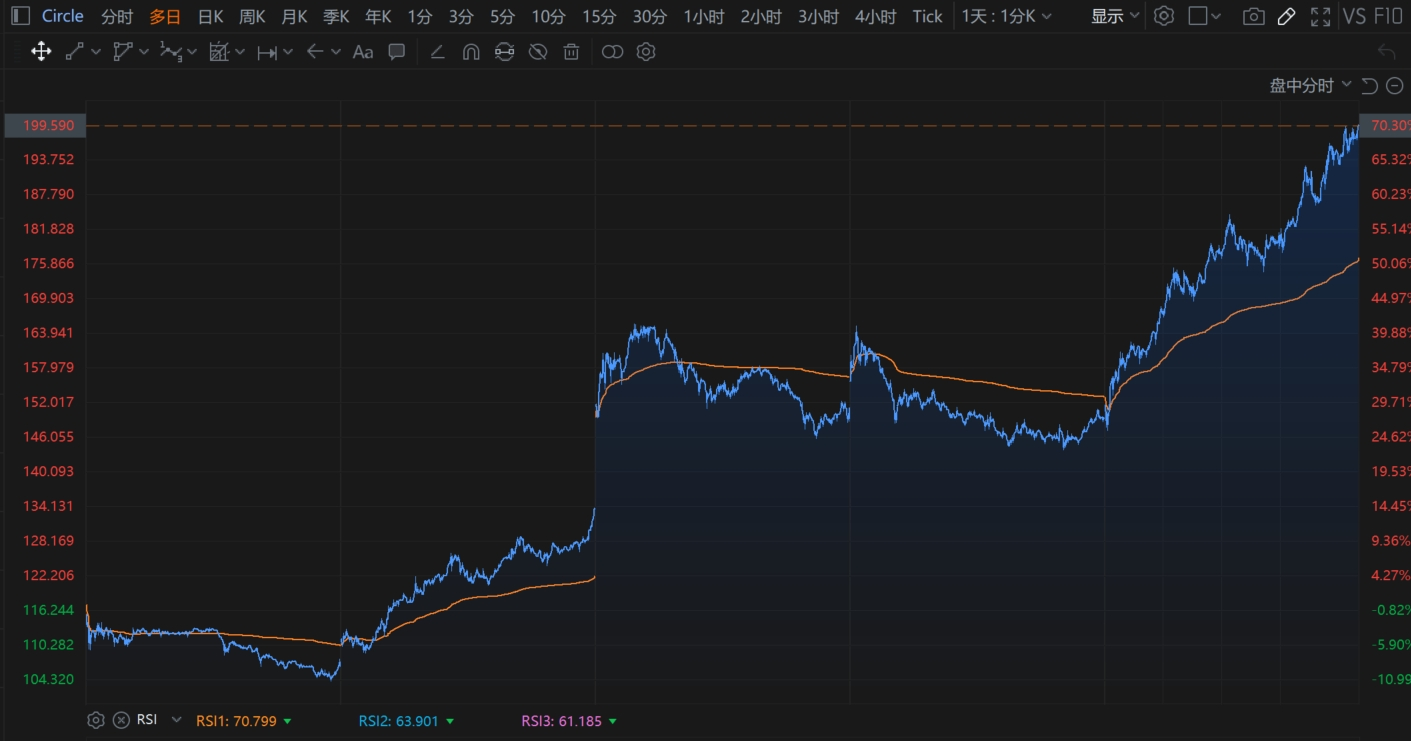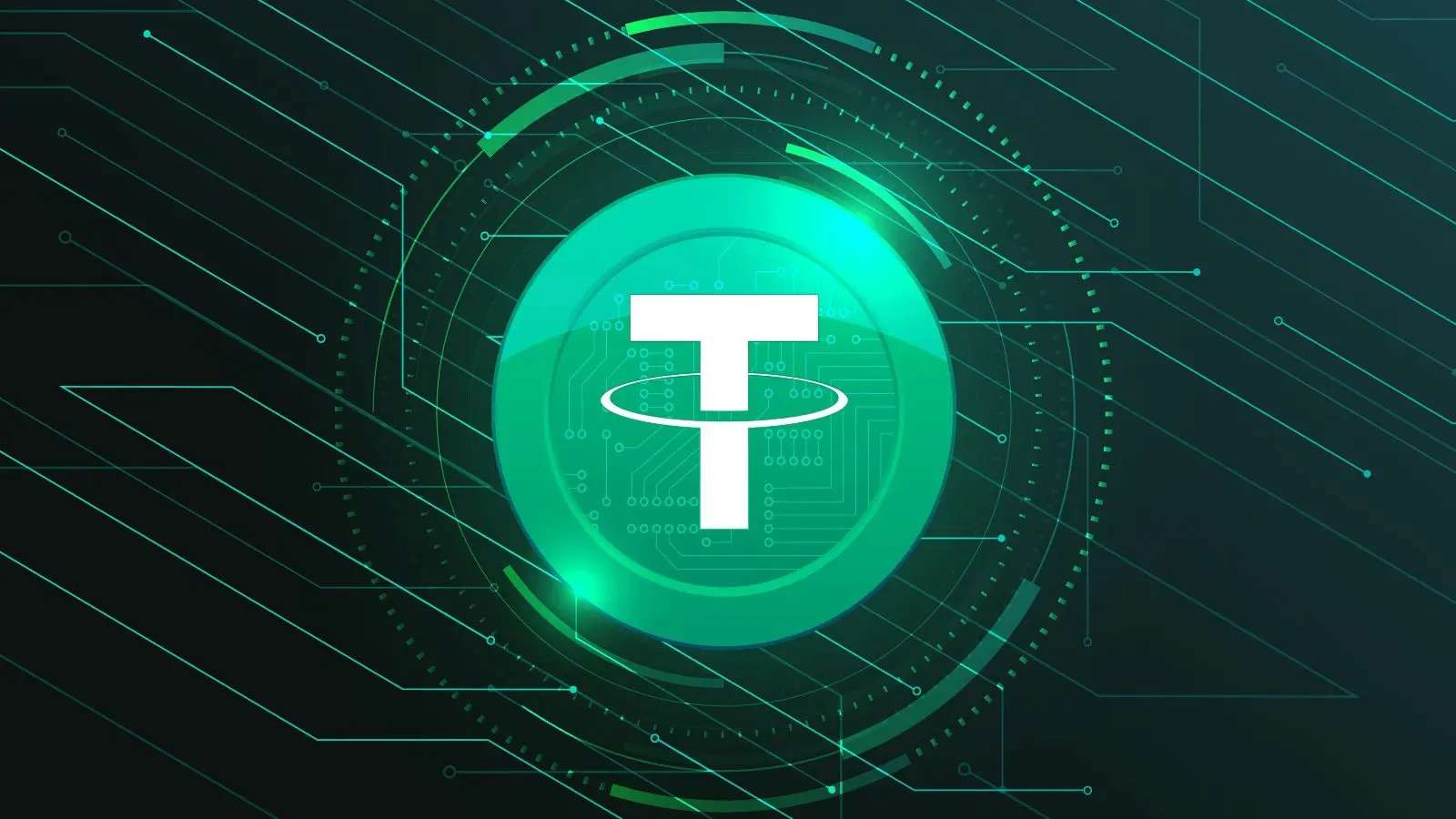In the 2024 election, the cryptocurrency industry spent US$250 million in political donations, successfully creating "the most pro-crypto Congress in U.S. history."
Recently, the myth that the first stable coin Circle is five times in 10 days has swept the world.
It landed in the capital market for US$31 on June 5, and broke through US$200 ten days later, with a single-day increase of 34%, and a cumulative increase of more than 500%.Behind this dizzying rise is the complete ignition of market sentiment after the Senate passed the GENIUS Act, which requires the "debtization" of stablecoin reserves and establishes a bankruptcy isolation and anti-money laundering framework, opening the door to the era of compliance for the digital asset industry.

What drives the Circle craze is by no means a single factor-the regulatory icebreaking has resonated around the world: Hong Kong's "Stable Coin Ordinance" officially came into effect in May, becoming the first jurisdiction to establish a licensing system for legal currency stablecoins, requiring issuers to meet 1:1 Reserve and real-time audit requirements; the United States passed the GENIUS Act to allow National Bank to issue stablecoins, requiring 95% of its reserves to be deposited in FDIC insurance banks or short-term U.S. bonds.
What benefits will the Trump family gain?
However, for the Trump family, vigorously promoting stablecoins may have multiple purposes.

First, the bill forces stablecoins to use short-term U.S. Treasury bonds as reserve assets, which will transform stablecoin issuers into "one of the largest buyers of U.S. debt." It is expected to expand the market size from the current 240 billion to 2 trillion U.S. dollars by 2028., may even exceed the ceiling of 3.7 trillion yuan.
This design directly hits the pain point of U.S. debt-short-term treasury bonds account for 84% of the total issuance, and stablecoins 'thirst for short-term liquidity provides them with rigid purchasing power.According to Bitwise estimates, this alone may attract trillions of dollars in funds into the national debt market, which not only alleviates government borrowing costs, but also strengthens dollar hegemony through global stablecoin users. It can be called the most sophisticated financial geopolitical weapon in contemporary times.
Secondly, the chain of rewards for political donations is equally naked.In the 2024 general election, the cryptocurrency industry spent US$250 million in political donations, successfully creating "the most pro-crypto Congress in American history." As the camp's first legislative victory, the GENIUS Act perfectly fulfilled the consideration of power and capital.
Democratic Senator Jeff Merkley's complaint is a footnote: He proposed an amendment to ban officials from profiting from encryption, which was blocked by Republicans from the voting process-just after Trump was revealed to have made $57 million a year through token sales.More subtly, the bill specifically exempted the president and vice president's ban on issuing stablecoins, coinciding with the launch of the stablecoin USD1 by World Liberty Financial, a subsidiary of the Trump family, and the US$2 billion investment from the United Arab Emirates.
This regulatory "precise exemption" allows the president's family to continue to expand the crypto landscape: from the $2.5 billion Bitcoin vault, American Bitcoin mining company, to WLFI governance token positions worth nearly $1 billion, constituting a net asset value of $5.6 billion. The core pillar.
The design of the bill's regulatory framework exposes the redistribution of power among traditional financial and technology giants.
On the one hand, it offered three guillotine knives: forcing 100% US dollar reserves, prohibiting non-financial companies from issuing stablecoins, and giving holders priority to bankruptcy liquidation, directly pushing offshore issuers such as Tether into a corner.
On the other hand, it opens up a privileged path for traditional banks such as JPMorgan Chase-its newly launched deposit token, JPMD, functions like a stablecoin, but is exempt from the same supervision because it is "highly integrated with the traditional banking system."This dual-track system triggered sharp criticism from Stanford Law School professor David Silverman: "The bill turns stablecoins into banks without providing deposit insurance, which is equivalent to building a playground on the edge of a cliff."The compromise clause for large technology companies is even more bizarre: allowing Meta and Amazon to issue stablecoins with "independent committee approval" while retaining user data mining rights, laying a new hole in privacy supervision.
In fact, the passage of the GENIUS bill was itself a textbook case of political transactions-the first round of voting in early May failed 48:49, but after the Republican Party accepted the Democratic Party's "anti-money laundering compliance" and "consumer bankruptcy protection", it reversed and won 16 Democratic lawmakers to defect.
Which companies are expected to benefit?
According to Guotai Junan Securities Research Report, with the advancement of the GENIUS Act, USDC issuer Circle$may become the biggest winner.Because it has long been proactive in embracing supervision-continuously promoting the transparency of asset audits, and cooperating with guidance and suggestions from US regulators, reserve assets are mainly cash and short-term US bonds.After the passage of the bill, USDC's penetration rate in payment networks such as Visa, Mastercard, and PayPal is expected to jump further due to its unique attributes of "registration in the United States, clear audit, and regulatory friendliness."
The USDT faces survival model challenges.Tether, the USDT issuer, is headquartered in the British Virgin Islands and has long used "offshore opacity" as its moat, and the composition of its asset reserves has been repeatedly questioned.With the implementation of the GENIUS Act, the circulation of USDT in the United States will undoubtedly be significantly affected.Although Tether is not hopeless, its options are not easy either:
Proactively apply for a U.S. license in accordance with regulatory requirements;
Abandon the U.S. market and move to Asia, the Middle East and other places;
Establish a cooperation mechanism with compliance platforms and access compliance networks in disguise through "tiered issuance" or "transfer and bridging" methods.
Overall, although USDT still has advantages due to its liquidity, network effects and global adoption, the complexity and time cost of its compliance transformation provide a valuable window for USDC.USDC is expected to take advantage of the GENIUS Act to accelerate its penetration in global payment networks and institutional scenarios, and its market share may be significantly increased.



